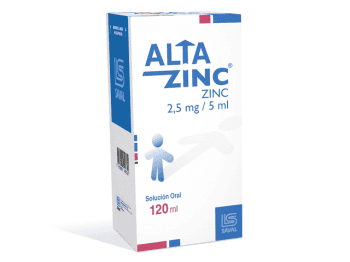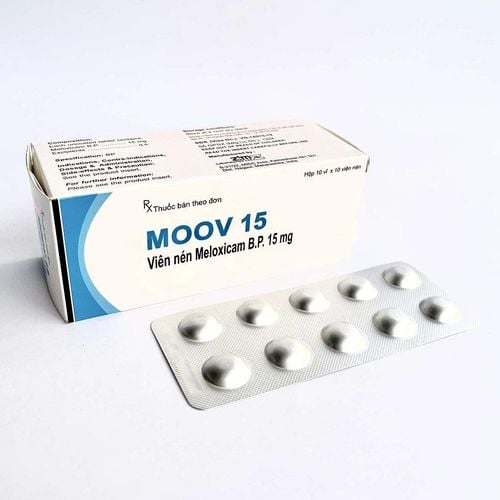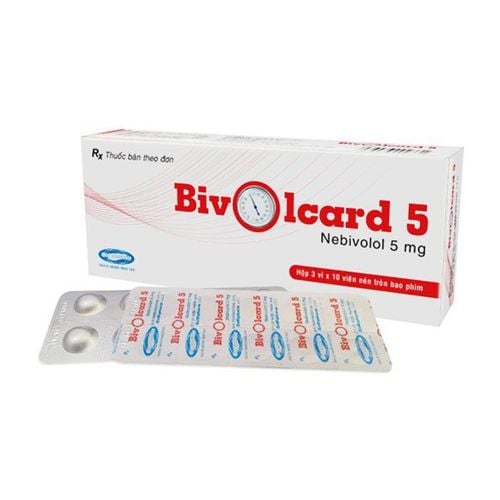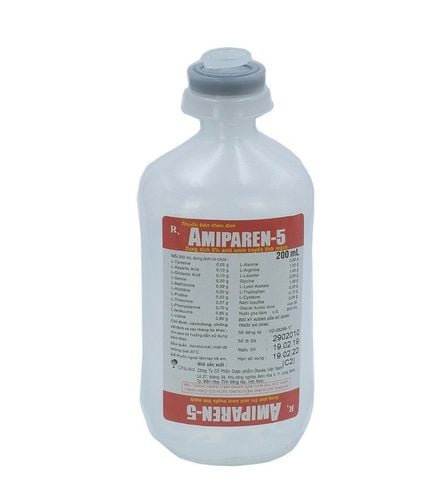This is an automatically translated article.
Ventricular tachycardia is a paroxysmal supraventricular tachycardia that results in the heart not being able to pump enough blood. Sustained ventricular tachycardia is an arrhythmia that requires emergency care, as it can lead to ventricular fibrillation and even cardiac arrest.
1. What is ventricular tachycardia?
Ventricular tachycardia is an arrhythmia when the heart beats too fast and is not fully pumped with blood. Ventricular tachycardia is diagnosed when there are more than 3 consecutive ventricular beats with a heart rate greater than 120 beats/min. Some experts suggest using a threshold greater than 100 beats/min to diagnose ventricular tachycardia. In addition, the patient may have clinical manifestations such as hemodynamic instability or hemodynamic instability.
Symptoms of ventricular tachycardia depend on the duration of the attack and vary widely. Because the ventricles are primarily responsible for pumping blood around the body, ventricular arrhythmias cause symptoms compared with other arrhythmias, ranging from no symptoms to palpitations and hemodynamic disturbances. In particular, prolonged episodes of ventricular tachycardia will always be symptomatic, which is an emergency situation because it can turn into ventricular fibrillation or even sudden death.
Most patients with ventricular tachycardia have structural heart disease especially cardiomyopathy or myocardial infarction. Factors that contribute to ventricular tachycardia include electrolyte disturbances, acid-base disturbances, hypoxemia, and side effects of certain medications. Ventricular tachycardia is classified into several categories, including:
Monomorphic ventricular tachycardia: due to an extraneous focus or a single re-entry cycle. Varicose ventricular tachycardia: due to multiple peripheral foci or multiple re-entry loops with different rhythms. Unsustainable ventricular tachycardia: duration less than 30 seconds. Prolonged ventricular tachycardia: duration usually more than 30 seconds.
2. Prolonged ventricular tachycardia can be life-threatening
Persistent ventricular tachycardia always presents with palpitations, hemodynamic disturbances or sudden death. This is a medical emergency because it can turn into ventricular fibrillation and even lead to death. According to a study of 157 patients on the mechanism of sudden cardiac death, ventricular fibrillation had the highest risk of death up to 62.4%. Most patients have ventricular tachycardia associated with cardiovascular diseases, according to a statistic, the rate of ventricular tachycardia in patients with coronary artery disease is as follows:
Unsustainable ventricular tachycardia accounted for 67% Sustained ventricular tachycardia long 3.5% ventricular fibrillation 4.1% ventricular tachycardia with ventricular fibrillation accounted for 2.7%
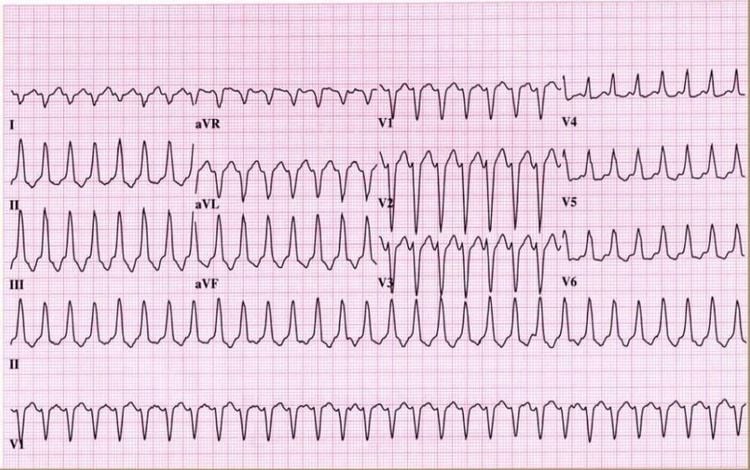
Kết quả ECG nhịp nhanh thất đơn dạng bền bỉ
Accordingly, the mortality rate is:
ventricular tachycardia: 18.6% ventricular tachycardia with ventricular fibrillation: 44% Death after one year: 7% Not due to ventricular arrhythmia 3% In addition, the diagnosis may be mistaken Confusion because some patients have ventricular tachycardia but are well tolerated, leading to the conclusion that the tachycardia is of supraventricular origin. And the use of certain drugs to stop supraventricular tachycardia in patients with ventricular tachycardia can aggravate the condition and lead to hemodynamic disturbances, even death. Therefore, the diagnosis of ventricular tachycardia should be based on the ECG findings when there are:
signs of AV dissociation ventricular palpitations Mixed ventricular contractions Co-positive or co-negative QRS complex morphology in Precordial leads with inverted T waves Electrocardiographic axis indeterminate
In addition, special attention should be paid to the differential diagnosis of supraventricular tachycardia with bundle branch block or conduction via accessory pathways.
Prolonged ventricular tachycardia if left untreated can be life-threatening. Therefore, the main goal of long-term treatment is to prevent sudden death, rather than to prevent an arrhythmia. However, decisions to treat patients are often complex and depend on the estimated probability of life-threatening episodes of ventricular tachycardia and the severity of underlying underlying cardiac problems.
In summary, prolonged ventricular tachycardia always presents with clinical symptoms such as palpitations, hemodynamic disturbances. This is a situation that requires immediate medical attention as it can turn into ventricular fibrillation or even cardiac arrest.

Kiểm tra sức khỏe tim mạch định kỳ giúp phát hiện và điều trị bệnh lý (nếu có) kịp thời
With many years of experience in the examination and treatment of cardiovascular diseases, now Vinmec International General Hospital has become one of the major Cardiology centers, possessing a team of qualified doctors and nurses. , well-trained and has a system of modern facilities and medical equipment. As a result, the Cardiovascular Center at Vinmec International General Hospital is capable of examining, treating and monitoring and treating many intensive cardiovascular diseases. In particular, the entire process of examination, monitoring, treatment recovery is always integrated with many specialties to provide the opportunity for quick recovery, avoiding life-threatening situations.
Customers who need to visit and treat at Vinmec can come directly or contact the customer care call center for service.
Please dial HOTLINE for more information or register for an appointment HERE. Download MyVinmec app to make appointments faster and to manage your bookings easily.




